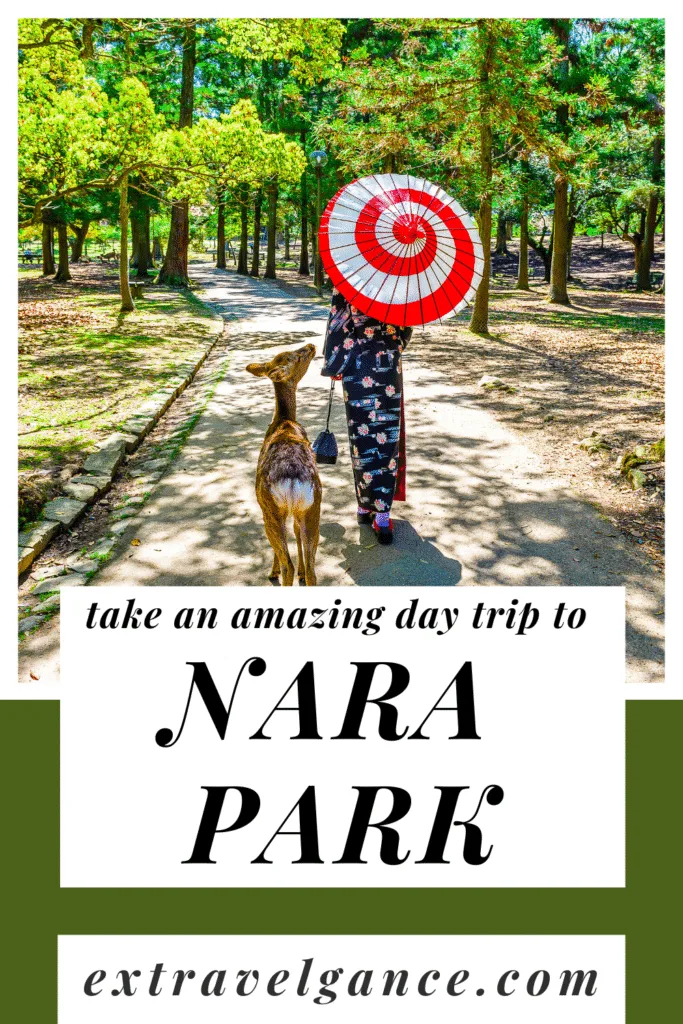
If you are in Osaka or Kyoto, you should definitely take time for a day trip to Nara. Nara is the site of Japan’s first permanent capital and is the birthplace of Japanese culture. This is all well and good! But most people want to go to Nara to experience the 1,000+ freely roaming sika deer that live in Nara Park. The deer, along with some of Japan’s oldest and significant temples and gorgeous scenery, make Nara Park a must-do on your itinerary.
Note: We may earn a small commission from the affiliate links below.
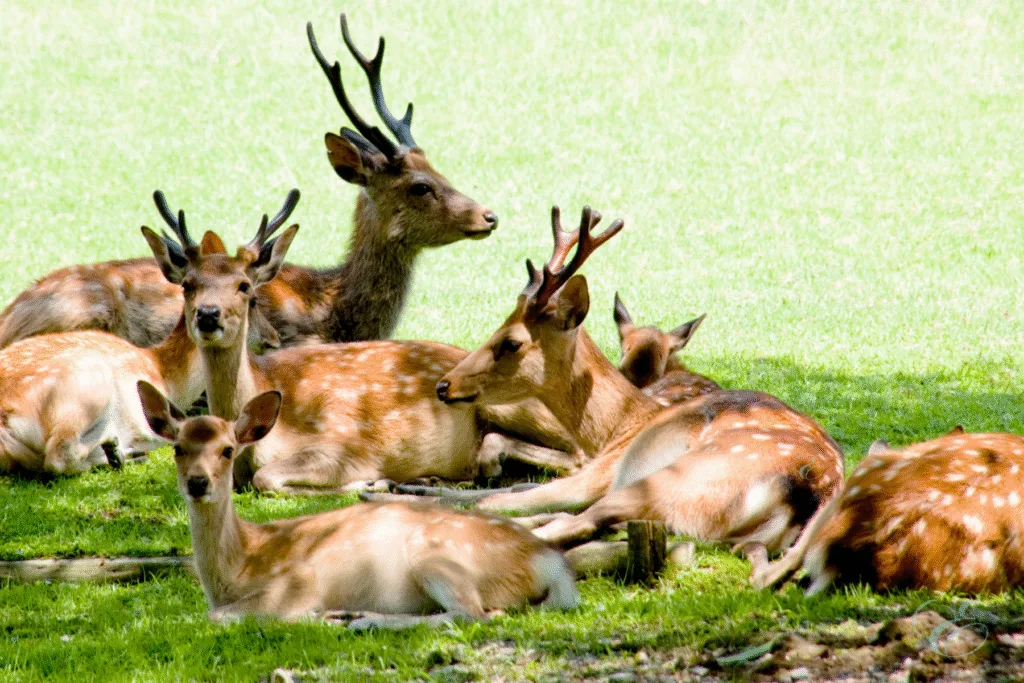
Getting There
Nara Park is located less than an hour away from both Osaka and Kyoto. It’s an easy day trip from both cities by train. Once you are in Nara, you can simply walk around to the most significant sites. But if you prefer, you can always book a group tour. If you decide to go on your own, here’s an itinerary for your day.
Morning Plan
If you are in Kyoto, take the Kintetsu Kyoto Line Express from Kyoto Station to Kintetsu Nara Station. This will take about 35 minutes, and then you can walk to the main sites. From Osaka, take the Kintetsu Nara Line from Osaka Namba Station to Kintetsu Nara Station. This takes about 40 minutes, and again, you can then walk everywhere.

Nara Park
Start the day by walking through Nara Park. Along the way, you are sure to be greeted by dozens of friendly deer. According to Shinto (a Japanese religion) tradition, the deer are messengers of the god Takermikazuchi who is enshrined at the nearby Kasuga Taisha Shrine. For centuries their sacred status has meant that harming them was punishable by death. Today they are considered national treasures.
The deer are tame and friendly. They don’t mind you standing near them and taking photos, and they love you to feed them. You can purchase shika senbei (deer crackers) from vendors around Nara Park. Be forewarned, however. The deer can become very aggressive when food is present. When I was there, one bit my hip because I think it smelled a granola bar I had in my purse! It was just a little nip, so no damage was done. And I think you do need to experience feeding the deer. If you present food and bow at them, many of the deer will bow back before taking the offering. It’s charming and probably the main reason most people add Nara Park to their itineraries!
Here are some important things to remember when interacting with the deer. Buy the deer crackers there – don’t just feed them whatever snacks you have on hand. Keep your hands visible at all times and feed them only one cracker at a time. Stay calm, move slowly, and supervise your children as the deer can get a bit pushy. To avoid aggressive behavior, don’t tease the deer or withhold food after showing it to them. Also don’t touch their antlers or tails. And you will have a better experience if you schedule your deer interaction outside of the peak late morning and early afternoon hours.
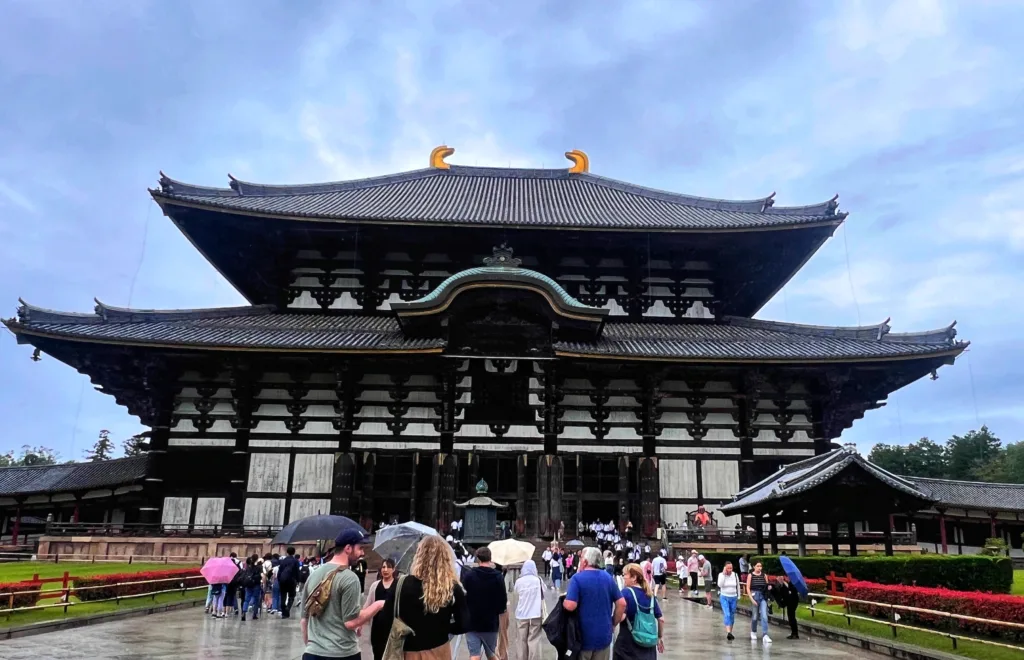
Tōdai-ji Temple
Make your way through Nara Park towards Tōdai-ji Temple. This UNESCO World Heritage Site is home to Japan’s largest bronze Buddha statue. Pay the small admission fee so that you can go inside the Great Buddha Hall to see it and other treasures. You can also enter Hokkedō (March Hall) to see more Buddhist statues and Kaidan-in Kaidan Hall to see the Four Heavenly Kings statues. And if you want to learn about the history and art of the temple, visit the Todaiji Temple Museum.
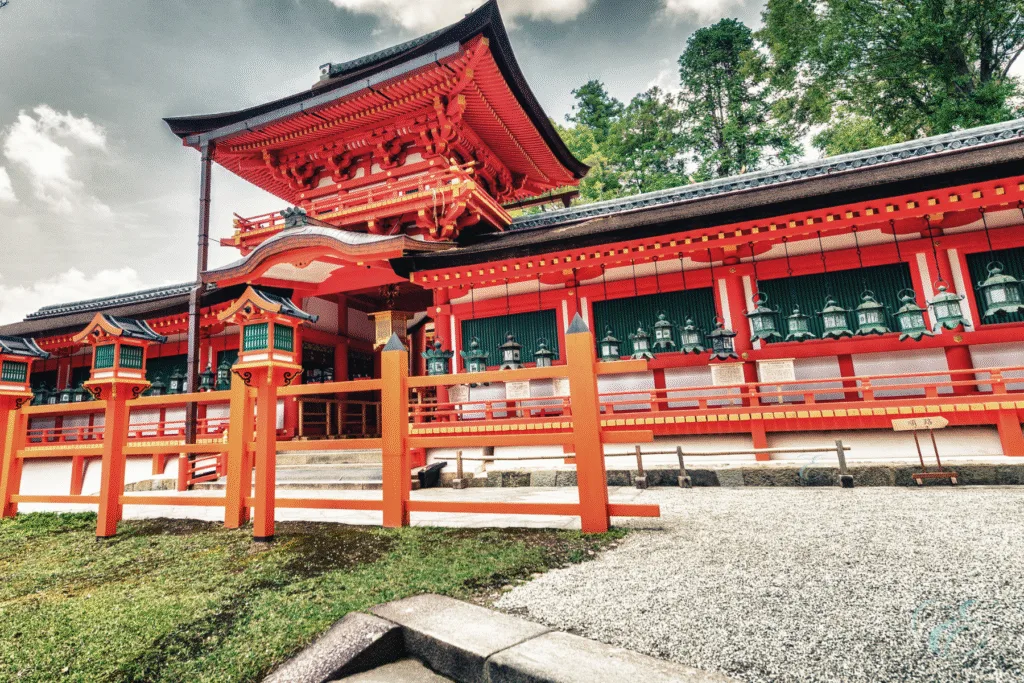
Kasuga Taisha Shrine
Next, walk over to Kasuga Taisha Shrine. This Shinto shrine features thousands of hanging stone and bronze lanterns. Take some time to admire the lanterns, then take a stroll through the nearby Man’yo Botanical Garden. You can also visit the Kasuga Taisha National Treasure Hall to see many cultural artifacts. If you are hungry, stop by the Kasuga Ninai Jyaya Garden Cafe.
Afternoon Options
How you spend your afternoon in Nara Park depends on your interests. There’s plenty to see and do, but you probably won’t have time (or the inclination) to do all of it! So choose a few things from the following suggestions.
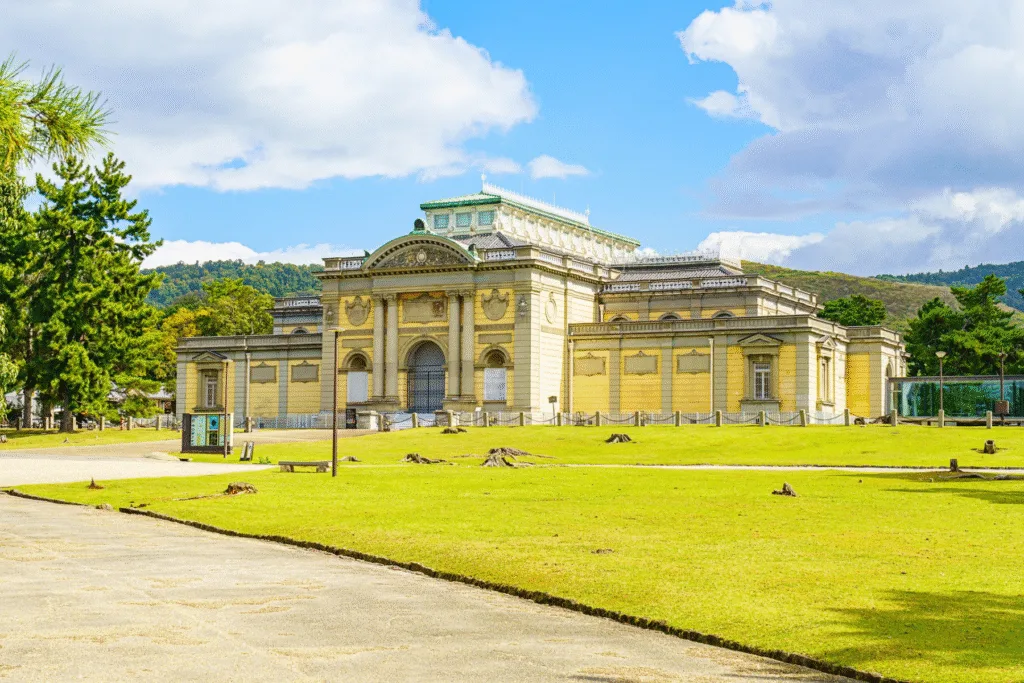
Nara National Museum
The Nara National Museum showcases Buddhist art, sculpture, and cultural treasures from Japan’s many ancient temples. It will take you about two hours to view all of the exhibits.

Visit a Garden
If you love Japanese gardens, then you might want to spend a few hours exploring two within Nara Park. Isuien Garden has two sections. One is from the Edo period and the other is from the Meiji period. Expect to see ponds, stepping stones, tea houses, and gorgeous greenery. You can also visit the Neiraku Museum of Art onsite. It contains art that survived an air raid of Kobe City in World War II. There’s a small admission fee to enter the garden and museum.
Yoshikien Garden is next to Isuien. It contains a pond garden, a moss garden, and a tea ceremony garden. A bonus is that is free for foreign visitors!

Hike up Mount Wakakusasyama
Need to add a little vigorous exercise to your day? Then take the 35 minute hike up Mount Wakakusayama. Once you reach the summit, you are rewarded for your efforts with stunning views of Nara park and city. There’s a small fee to enter one of the two climbing trails.
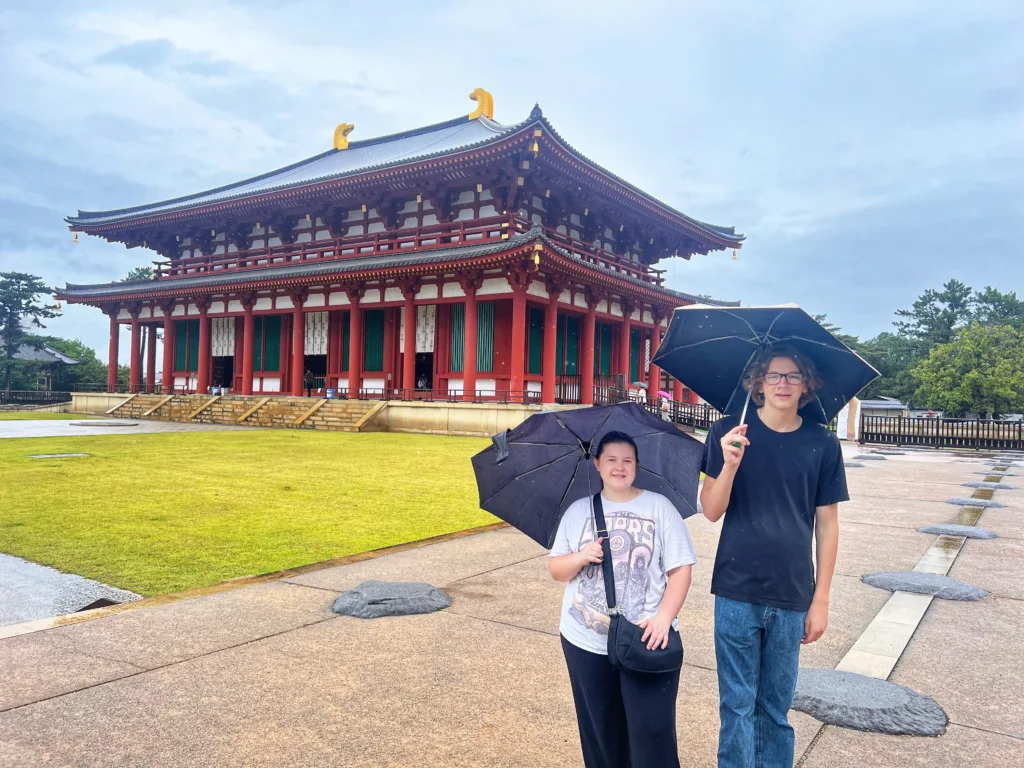
Kofuku-ji Temple
If you haven’t had enough temples, make sure to stop by the UNESCO World Heritgae Site Kofuku-ji Temple complex. Admire the Goju-no-to five-story pagoda, which is the second tallest wooden pagoda in Japan. You can enter in to some of the buildings in the complex. Go into Chukondo (Central Golden Hall) to see a large golden Buddha. There’s also Tokondo (Eastern Golden Hall) which is home to the famous Yakushi Buddha triad and other Buddhist sculptures and relics. For more culturally significant artifacts and art, visit the National Treasure Museum. There are also interesting octagonal halls onsite that you can view.
Late Afternoon/Evening Plan
As you make your way back to Kintetsu Nara Station, stop by Naramachi. This is Nara’s old merchant district. It has preserved machiya townhouses, charming boutiques, art galleries, and restaurants serving traditional foods. This is a great place to buy a few souvenirs and have dinner.
When you are ready to head back to Kyoto or Osaka, simply walk back to Kintetsu Nara Station. Trains run until about 11 p.m. so you have plenty of time to make the most of your day trip to Nara Park!
Half-Day Alternative
This plan assumes you have a full day to dedicate to Nara Park. On my recent trip, I did not. But I was able to squeeze in a half-day visit from Kyoto. And it was well-worth doing! In our half-day, we had lunch, saw the Tōdai-ji Temple complex and the Kofuku-ji Temple Complex. And of course, we admired, interacted with, and fed the deer. We had time to also go to the Kasuga Taisha Shrine, but for some reason it wasn’t on my radar. Next time!
What’s on your must-do list for Nara Park?
Tell us below! You can also contact us and follow us on Facebook, Instagram, and Pinterest so you never miss a post.

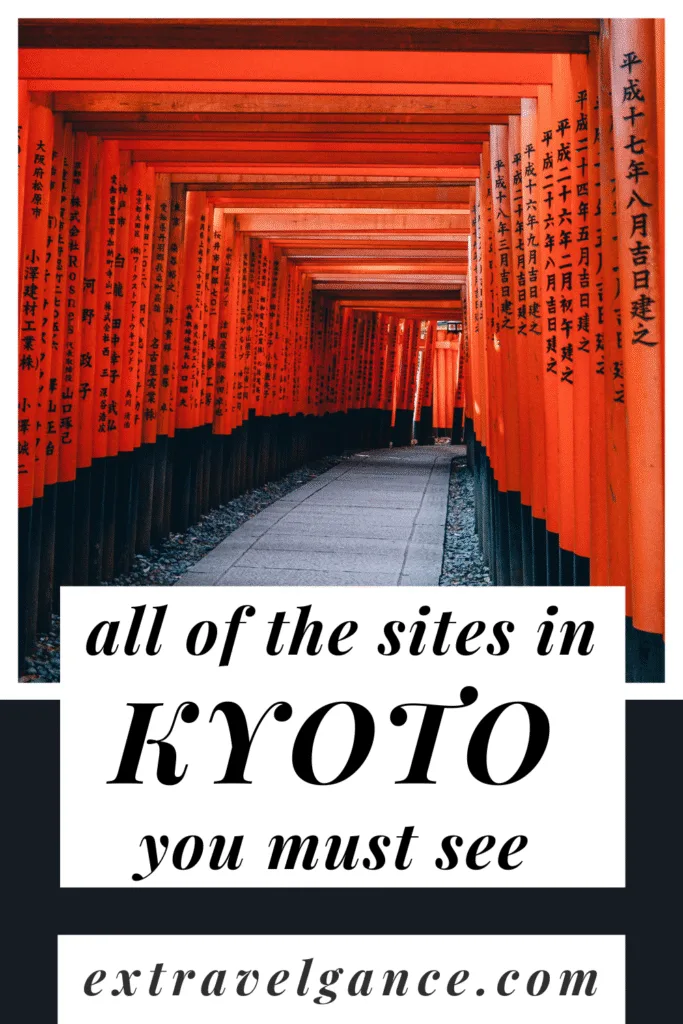
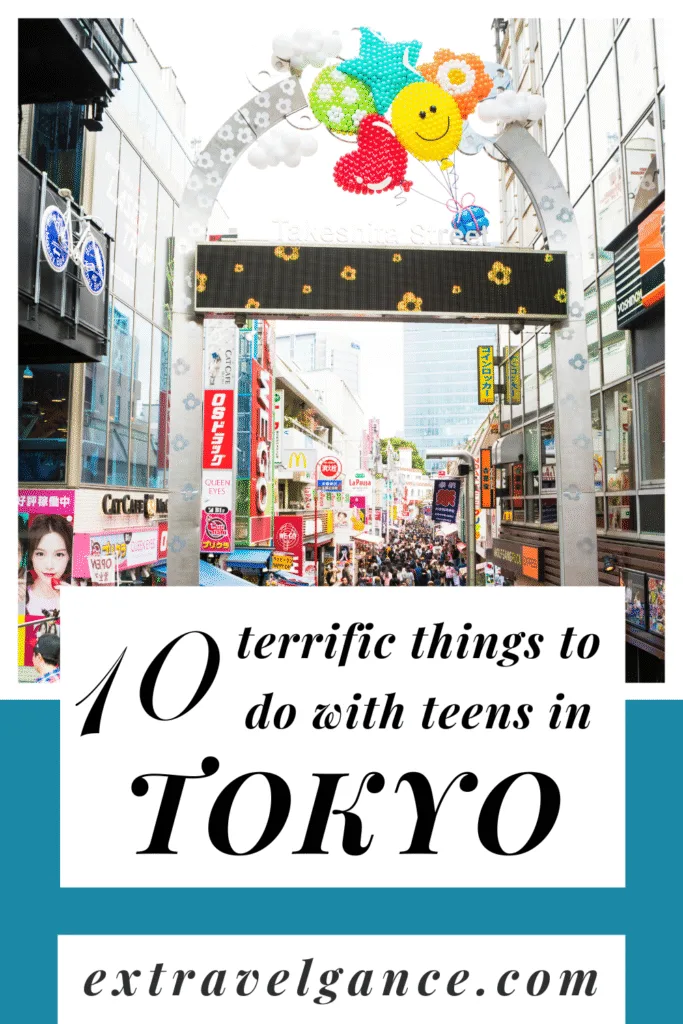
Pingback: Best Itinerary for a Japan Trip with Teens - Extravelgance